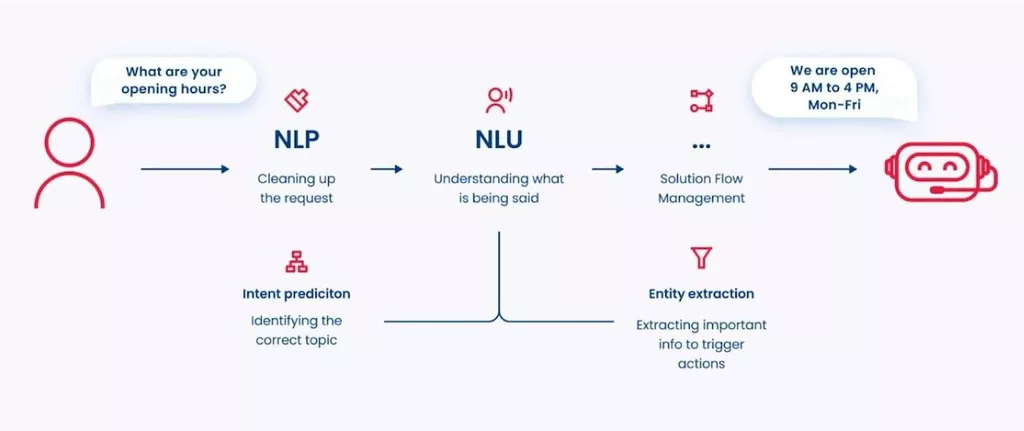Throughout the Forming stage, team members are sometimes cautious with their conduct, which is driven by a want to be accepted by all members of the group. It’s a time for team members to test the waters and understand the boundaries in each the personal and task-related sense. Inside the broader category of group dynamics, we see the impression of teams on people via “groupthink,” “roles,” and “group norms.” Every of these categories could be subdivided and explored deeper. Once their efforts are underway, staff members need clarity about their actions and goals, as properly as explicit steerage about how they may work independently and collectively. This leads to a period known as storming—because it could involve brainstorming concepts and in addition as a end result of it usually causes disruption. During the storming stage members start to share concepts about what to do and the method to do it that compete for consideration.
As A Outcome Of storming could be contentious, members who are averse to conflicts may find it unpleasant or even painful. This can decrease motivation and energy by drawing consideration away from duties. Other times a group never leaves this stage and becomes caught and unable to do its work. Patience and consideration toward staff members and their views go a good distance toward avoiding this downside. Cultural issues also play a big role in how teams evolve, with the mannequin not fully accounting for cultural variety within groups. Totally Different cultural backgrounds can affect the length and intensity of each stage, requiring a extra nuanced understanding of group growth.
- This stage is a critical test of the team’s resilience as variations in opinions and dealing types conflict.
- In this stage, all staff members take responsibility and have the ambition to work for the success of the staff’s targets.
- The findings affirmed the model’s practicality for each academia and practitioners within the workplace.
One of probably the most remarkable options of collaborative groups is how they deal with disagreement. As A Substitute of avoiding battle (orientation) or letting it escalate (confrontation), mature groups use disagreement as a software for better decision-making. They engage in what researchers call “task conflict” – wholesome debate about ideas, approaches, and options – whereas maintaining positive relationships. As A Substitute of everyone leaping in with ideas (orientation) or arguing about whose strategy is finest (confrontation), they develop more systematic ways of evaluating choices and making selections. Members learn to leverage each other’s strengths and compensate for weaknesses.
It’s not often formal – no one’s handing out performance reviews – however members start noticing and responding to variations in contribution ranges what are the stages of team development and work high quality. As Soon As a bunch efficiently navigates the stormy waters of confrontation, they enter differentiation – a stage characterised by elevated clarity about roles, responsibilities, and working relationships. It’s like a puzzle where the items are finally beginning to match together in significant ways. All Through the mission, Commander Sullivan continued to facilitate open communication and provide feedback. He trusted his staff and delegated tasks effectively, focusing on overseeing the big picture. One of the most common misconceptions about Tuckman’s mannequin is that teams will always move linearly from one stage to the next, like stepping stones across a river.

Tools like Innerview can play a vital function in this course of, especially when it comes to understanding staff dynamics via user analysis and interview analysis. By routinely transcribing and analyzing staff interactions, Innerview can help leaders establish patterns and insights that illuminate where a team is in its improvement journey. In the intricate dance of group dynamics, where people come together to achieve a common objective, there exists a rhythm, a sequence of steps that information the collective journey from uncertainty to success. This rhythm was first articulated by psychologist Bruce Tuckman in 1965, who introduced a model that has since turn out to be a cornerstone in understanding group improvement. The group development levels (Tuckman model), with its levels of Forming, Storming, Norming, Performing, and Adjourning, offers a lens through which we can observe the fascinating evolution of teams. As we delve into the intricacies of this mannequin, we uncover the universal patterns of human interplay and the path that leads groups to synergy and accomplishment.

This transition, known as the ‘Adjourning’ stage, comes with its own set of feelings and challenges, which we’ll talk about next. In this stage, team members have turn into interdependent, balancing their particular person obligations with the group’s targets seamlessly. Disagreements and conflicts still come up, as they do in any group of people, but they’re now handled constructively and effectively, with minimal disruption to the group’s workflow. The group chief, akin to the theatre director, steps again from a direct position, shifting to a more supportive position, offering steerage and encouragement as needed.
Let’s discover how Tuckman’s mannequin could be utilized in real-world eventualities and the benefits it brings to staff dynamics. As groups progress via the levels of group development, they ultimately attain the Norming stage – a pivotal section the place cohesion begins to take root and productiveness starts to flourish. This stage marks a major shift from the tumultuous Storming section, as group members discover their rhythm and set up a more harmonious working surroundings. In this case, the models ought to be impartial of the precise particulars of the duty that the group is performing. On the opposite hand, some fashions would possibly describe phases of the group’s task performance and, because of this, are usually very sensitive to the type of task that the group is engaged in (the “performing system”,3 p. 101). The ultimate stage of group improvement is collaboration, also called the performing stage.
Tuckman’s four stages of group development are a extremely helpful framework for both people and leaders to concentrate on. From a leadership perspective, this stage is all about helping the group to progress through disruption. Leaders ought to consider the disruption and battle as finally constructive at this stage. They also wants to attempt to ensure that everyone has some voice, that trust is built and that inclusion is practiced.

Thus, the researchers research concerning the group growth to determine the changes that occur throughout the group. They should acknowledge conflicts without taking sides, redirect power towards constructive problem-solving, and help the group set up productive ways of dealing with disagreement. These conflicts aren’t essentially bad – they’re usually essential for the group’s long-term health. Members are testing boundaries, clarifying expectations, and working out the kinks of their working relationships. Nonetheless, this stage could be uncomfortable and even harmful if not managed properly.
Understanding these completely different reactions can help leaders and staff members navigate the storming stage more successfully. Group members begin to push against the boundaries established within the Forming stage. Conflict arises as individuals jockey for place, problem the team chief’s authority, and disagree on staff objectives and methods. During this section, team members are sometimes well mannered, positive, and desperate to make a good impression.
Collaboration: Achieving Peak Efficiency
Students recommend modifications to the mannequin to incorporate these variations, proposing more versatile frameworks that account for the distinctive contexts and traits of each group. Be Taught about agile methodologies, rules, and greatest practices to enhance your software program improvement process and ship high-quality merchandise effectively. Members are motivated, educated, and capable of handle decision-making processes with out crm development supervision. As a result of this social stabilization and acceptance, methods of working begin to turn into more consistent and normalized. Belief starts to be constructed, friction reduces and the group begins to have the flexibility to give consideration to reaching a standard aim with broadly constant and understood methods of working. They start to get to know one another more, have a better understanding of the true views and opinions that each other maintain and to settle into a broadly accepted social structure and hierarchy.
Forming
And its success or failure very much hinges on the information and talent of its leadership. When leaders enable teams to form and develop with unrealistic expectations or too little oversight, unhealthy things can occur. Conversely, when leaders recognize that every staff wants some time and TLC to develop right into a functional unit, good issues are inclined to https://www.globalcloudteam.com/ follow. “Resolved disagreements and character clashes result in higher intimacy, and a spirit of co-operation emerges.”5 This occurs when the group is conscious of competition and they share a typical objective. In this stage, all group members take accountability and have the ambition to work for the success of the team’s goals. The danger here is that members could additionally be so centered on stopping battle that they are reluctant to share controversial concepts.
A variety of theoretical fashions have been developed to elucidate how certain groups change over time. In some instances, the sort of group being thought-about influenced the model of group growth proposed as in the case of therapy teams. After navigating by way of the forming, storming, and norming stages, the staff has now reached some extent of high efficiency and productiveness. A Lot like a well-rehearsed theatre efficiency, the team operates easily with a deep understanding of their roles and obligations. They’re driven by a shared objective, and each member is motivated and competent to hold out their tasks autonomously. In conclusion, Tuckman’s model of group development stands as a testomony to the enduring nature of excellent principle.
While individuals make smaller selections, the group develops a process for making more essential choices. The key is recognizing where your group currently stands and what they want to move ahead. Confrontation-stage groups need conflict resolution expertise and powerful facilitation.
Storming
In our view, this may be a good model that’s worth sharing inside teams, notably recently formed teams. It’s also particularly useful in matrix of project environments where teams come collectively and disband fairly frequently. Leaders can discover a vary of activities which can be used to bring the mannequin to life, but merely discussing and sharing it can be useful too. We are not masking these phases right here, however a lot info is out there on them elsewhere should you search the internet. Adjourning is worth understanding about if you’re in a project group or different groups that kind and disband regularly. In the norming stage, disputes are resolved, folks settle for and understand subconsciously that personalities have been revealed, boundaries have been examined and social positions have been collectively agreed.
